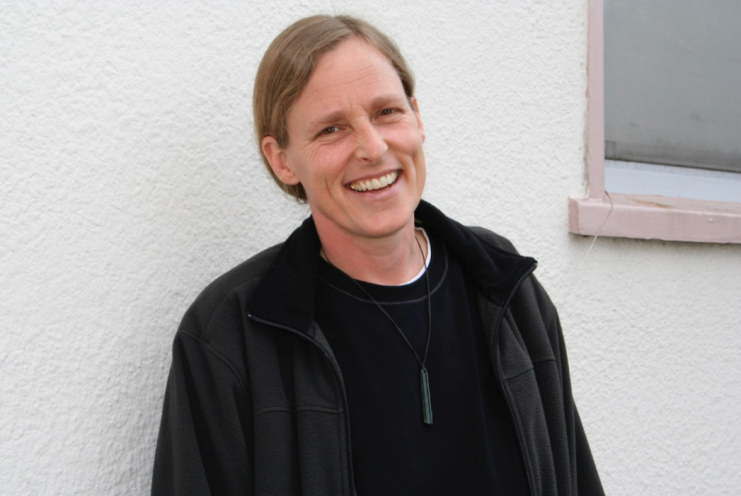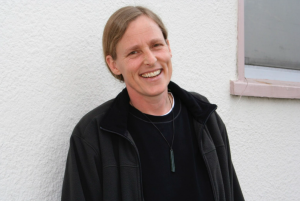
Creating Space for Focal Student Partnerships
It was a cycle I had been through before; choose focal students and watch them slip like water through my fingers.
In a school district that has become predominantly White in recent years, I felt it was even more imperative to provide meaningful support to two 13-year-old, African American boys in my US History classroom who were struggling with the material.
Often, students reading below grade level and struggling with the material can become disruptive or disengaged. Neither of these boys disrupted class in frustration. Instead, and perhaps worse, they just tried to become invisible and hoped no one would notice.
But I noticed. I wanted them to feel successful in History and with their reading. As a Humanities teacher, I spent seven years teaching English. I also spent three years teaching Read 180, a remedial reading class. After returning to US History, supporting the teaching of literacy was always on my mind and embedded in my lessons. I wanted to support all my students’ growth in their literacy skills, but my focal students were not having academic success at the start of the year with the literacy I was embedding or history content.
I was eager to try something different. I wanted to know if students who didn’t turn in essays and pass quizzes were getting ANYTHING out of just BEING in my class that I could give them credit for. Both of my focal students attended every day. I believed it was possible that they were actually learning historical concepts and ideas, but could not express what they knew. I was heartened to learn in our Lead by Learning inquiry session that other teachers were wrestling with similar challenges and uncertainties. One colleague encouraged me to relax some of the traditional requirements for assessment without lowering expectations. As a teacher who had moved from teaching English to Physical Education, she was well aware of how urgently students who were not achieving their full potential needed feedback that empowers and motivates rather than demoralizes them.
To test my hypothesis, I began giving each of my focal students oral assessments while the rest of the class took written tests. I would read the questions and possible answers to them. Both boys knew much more about the material than what written tests showed and each “wrong” answer revealed how easily questions can be interpreted differently. This process also led us into educational conversations that served as a useful re-teaching of the material.
By not requiring written responses, I was able to give them credit and encouragement that seemed to refresh their desire to participate in class. However, as we drew closer to spring and promotion time, I reverted back to my worries about sending them off to High School without enough academic skills and strategies in reading and writing to thrive. Shouldn’t I be teaching them how to read what the high school teacher assigned?
My Lead by Learning lead coach, Sarah, advised me to continue on my exploration, but to be explicit with the students. Sarah encouraged me to validate the skills they had learned already.
- They could find study guides and chapter summaries
- They were using audio books and voice to text tools
- They were participating in class discussions
- They were still engaged
- They were passing
She also suggested:
- Don’t push them to do assignments that are more abstract
- Focus on things that are more relatable
- Modify the reading, provide summaries and encourage them to watch related videos
- Engage their creativity and imagine there are no wrong answers
- Be satisfied with simply exploring historical ideas
I tried to make the shift that Sarah suggested and hoped that my focal student was getting something out of our study of “Narrative of the Life of a Slave” by Frederick Douglass.
About a week after his oral assessment, he arrived with a great sense of purpose and sat down at his desk where he wrote non-stop for 30 minutes. When the bell rang, he handed me the longest piece of writing I had seen him do. It was a rough paragraph about the first chapter where Frederick Douglass describes the pain he suffered because he didn’t know his own birthday and how his mother was rarely able to visit him. This student could relate. In his essay, he shared that he sometimes didn’t get birthday presents and that, without his mother, it was his auntie who taught him how to wash and do “basic things” to take care of himself.
A couple days later, he did it again. He sat and wrote continuously for 20-30 min. This time, however, he voiced his own feelings and concerns about racism in the class, his desire to be taught by black people, how depressing US History is and expressed that “this is not how I learn.” While it was painful to read, it was amazing to see him open up like a flower and use writing to advocate for himself and express his feelings.
I am not sure what cracked him open. Was it feeling more comfortable with the subject because he could see his grade finally starting to improve? Was it the inspiring story of Frederick Douglass that he had listened to in the hallway? Had this young, Black man just had enough? I wanted to find out more so I resorted to one of my favorite tactics for gathering data: I asked him to lunch.
We talked very freely for almost an hour. I told him how impressed and intrigued I was by his essay and he shared his views on what I needed to do to be more effective as his teacher. He explained that he didn’t like being in the classroom and would prefer to learn on his own. “This is not how I learn” is a very self-aware thing for a young man to say. Now my challenge was to figure out how to teach in a way that DID facilitate his learning.
First and perhaps most importantly, I provided my focal student space to work with the material on his own as he asked. With this space, he created his own assignments and responded to the content with rough summaries and paragraphs that showed me he was engaging with the material. He had agency and was empowered.
By not allowing my focal students to slip like water, but instead creating space for them to become my partners, I was able to keep them engaged. By being open to alternative assessments, I was able to more authentically evaluate these students’ learning. These alternative assessments became a rich opportunity for me to crack open my own assumptions and modify my practice to better meet their needs. I will continue to explore the effectiveness of teaching and assessing learning in history and will continue to rely on focal students to help me.

Andrea Prichett has been teaching US History at Willard MIddle School in Berkeley California since 2005. In addition to her work with 8th grade students, Andrea has taught in a variety of settings including teaching adults and children with developmental disabilities, adults in Zimbabwe, hIgh school students in private school as well as a continuation high school. She has also taught English, Read 180 and AVID for seven years and maintains a focus on literacy. In addition, Andrea serves on the City of Berkeley’s Mental Health Commission and works on various social and racial justice issues in her community.
